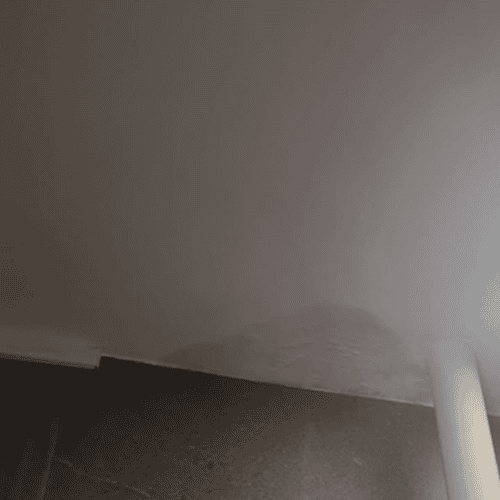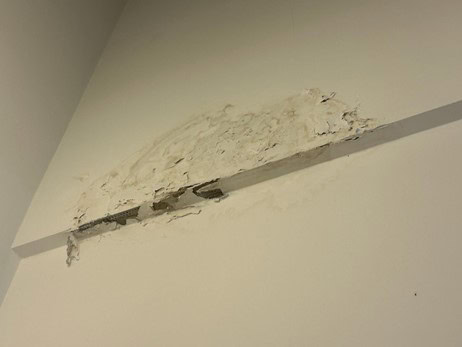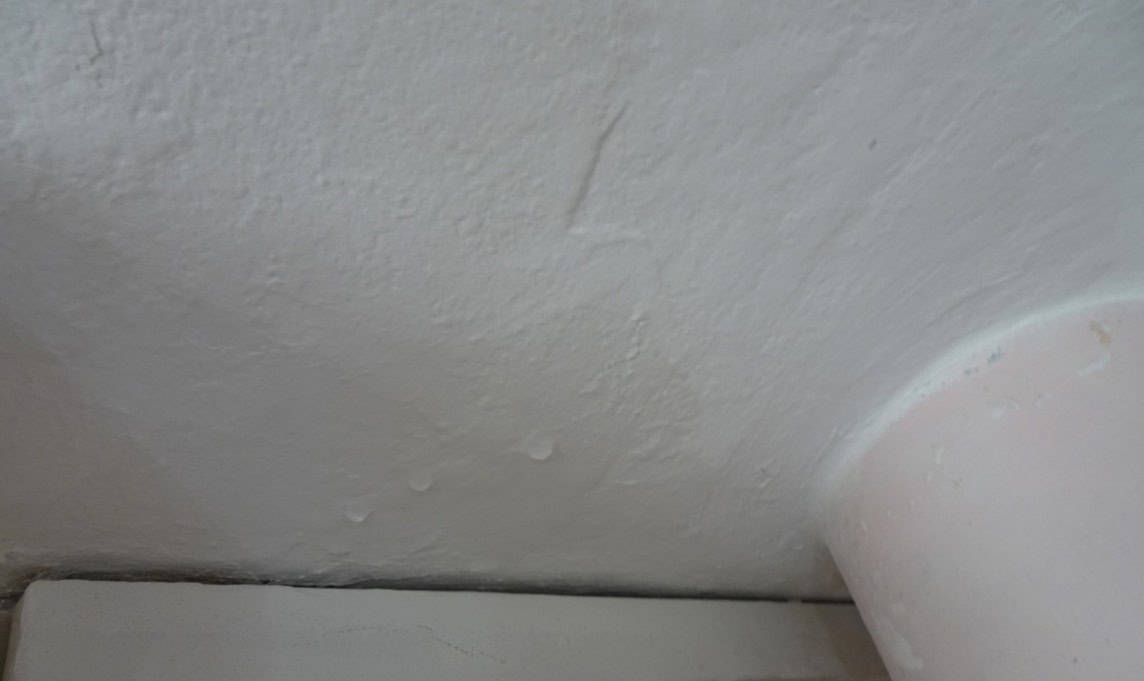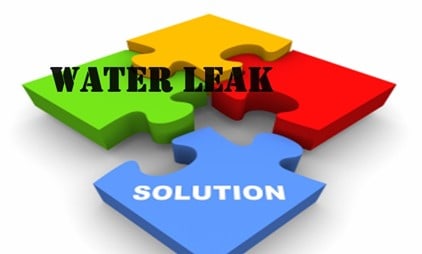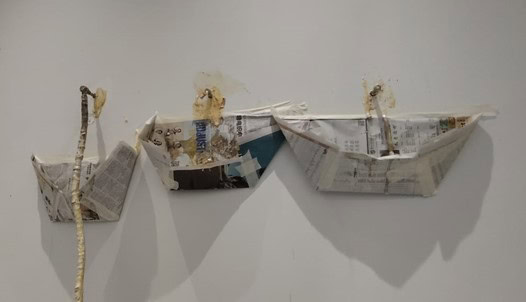Waterproofing is crucial in maintaining the integrity of buildings, especially in areas prone to water-related issues like bathrooms and toilets. However, even with proper waterproofing measures, leaks can still occur, leading to water damage and potential structural issues if left unaddressed. Recognizing the signs of waterproofing leakage is essential for timely detection and repair to prevent further damage and costly repairs.
One of the first signs of a waterproofing leak is often the appearance of water stains on walls or ceilings. These stains may start as small discolored patches but can quickly spread if the leak persists. Additionally, musty odors or mold growth in confined spaces like bathrooms can indicate hidden leaks that need immediate attention.

Early Signs of a Leak
Water Stains:
Early signs of a leak often manifest as water stains on walls, ceilings, or floors. These stains may appear as discolored patches or streaks and can indicate water seepage from plumbing pipes, fixtures, or waterproofing failures.
Musty Odors:
Persistent musty or moldy odors in specific areas of a room, such as bathrooms or utility rooms, can be early indicators of a hidden water leak. Mold and mildew thrive in damp environments created by water leaks.
Dampness or Moisture:
Feeling dampness or moisture on walls, floors, or ceilings, especially in areas near plumbing fixtures or pipes, can signal a water leak. Softened or weakened materials, such as drywall or wood, may also indicate water infiltration.
Puddles or Pooling Water:
Finding puddles or pooling water in unusual areas, such as under sinks, near appliances, or along baseboards, can be early signs of a leak. Investigate the source of the water to identify potential leaks.
Visible Mold or Mildew:
Early stages of mold or mildew growth on walls, ceilings, or grout lines can indicate prolonged moisture exposure from a water leak. The growth of mold or mildew on surfaces such as walls, ceilings, or grout lines is a clear sign of water leakage. Mold can appear as black spots, patches, or fuzzy growth, posing health risks and indicating ongoing moisture issues. Addressing these growths promptly can help prevent further damage and health risks.
Discolored or Warped Materials:
Discoloration, warping, or bubbling of materials such as paint, wallpaper, or flooring can occur when exposed to water leaks. These changes in appearance may be early signs of water damage.
Increased Water Bills:
An unexplained increase in water bills without a corresponding increase in water usage can suggest a hidden water leak within the plumbing system. Monitoring water consumption and bills can help identify potential leaks early.
Sound of Running Water:
Audible sounds of running water or water movement, particularly when no fixtures are in use, can suggest a hidden water leak. Listen for dripping sounds behind walls or under floors.
Reduced Water Pressure:
Sudden or noticeable drops in water pressure in faucets, showers, or toilets may indicate a leak in the plumbing system. Leaks can reduce water flow and pressure as water escapes through the leak.
Early detection of water leaks is crucial in preventing extensive water damage, mold growth, and structural issues. Regular inspections, vigilant monitoring of water usage, and prompt action upon noticing early signs can help mitigate the impact of leaks.
Common Signs of Water Leakage
Water leakage can manifest in various ways, including water dripping from ceilings or walls, peeling paint or wallpaper, and damp or swollen areas in flooring or skirting boards. These signs may indicate that water is seeping through waterproofing barriers and causing damage to underlying structures.
Failed Waterproofing Systems:
One of the primary reasons for water leakage symptoms is the failure of waterproofing systems. Waterproofing membranes, coatings, and sealants may degrade over time, develop cracks, or become damaged, allowing water to penetrate building structures.
Plumbing Issues:
Leaks in plumbing pipes, fittings, or fixtures can lead to water leakage symptoms. These leaks may occur due to corrosion, wear and tear, faulty installations, or aging plumbing systems.
Poor Construction Practices:
Improper construction techniques, such as inadequate sealing of joints and penetrations, insufficient slope for water drainage, or using low-quality materials, can contribute to water leakage issues.
Structural Damage:
Structural damage, such as cracks in walls or floors, compromised building envelopes, or settlement issues, can facilitate water intrusion and manifest as symptoms of water leakage.
Weather and Climate Conditions:
Extreme weather events, such as heavy rainfall, storms, or flooding, can overwhelm building waterproofing systems and cause water leakage symptoms. Climate factors like humidity levels and temperature variations can also impact the likelihood of water infiltration.
Lack of Maintenance:
Neglecting regular maintenance of waterproofing systems, plumbing components, and building structures can exacerbate water leakage problems over time. Routine inspections and timely repairs are essential in preventing water leakage symptoms.
Building Age:
Older buildings may be more susceptible to water leakage symptoms due to aging infrastructure, outdated waterproofing methods, and wear and tear over the years.
Groundwater and Soil Conditions:
High groundwater levels, poor soil drainage, or soil settlement around foundations can contribute to water pressure against building structures, leading to water leakage symptoms in basements or lower levels.
Understanding the underlying causes of water leakage symptoms is crucial in implementing effective repair and prevention strategies. Addressing these root causes can help mitigate water damage, protect building integrity, and maintain a healthy indoor environment.
The solution to Stop Water Leakage
Addressing water leakage requires a systematic approach that begins with identifying the source of the leak. Depending on the severity and location of the leak, solutions may include repairing damaged waterproofing membranes, resealing joints and gaps, or conducting PU Injection grouting to reinforce waterproofing barriers.
Stopping water leakage requires a comprehensive approach that addresses the root cause of the problem and implements effective solutions. Here are key steps and solutions to stop water leakage:
-
Identify the Source:
The first step in stopping water leakage is to identify the source of the leak accurately. This may involve visual inspection, using leak detection equipment, or conducting tests to pinpoint the exact location of the water intrusion.
-
Repair Waterproofing Systems:
If the water leakage is due to compromised waterproofing systems, such as damaged membranes or sealants, repairing or replacing these components is essential. This may include applying our Clear Penetrative Treatment (CPT) waterproof coatings, installing new membranes, or resealing joints and penetrations.
-
PU Injection Grouting:
Injection grouting, such as PU (Polyurethane) Injection, is a method used to fill cracks, voids, and gaps in concrete structures. Injecting polyurethane resin into these areas helps create a watertight seal, stopping water leakage and strengthening the structure.
-
Seal Joints and Penetrations:
Gaps around fixtures, joints, and penetrations in walls, floors, and roofs can allow water to seep in. Sealing these areas with waterproof sealants, caulking, or gaskets can effectively block water intrusion.
-
Address Plumbing Issues:
Leaks in plumbing pipes, fittings, or fixtures can contribute to water leakage. Repairing or replacing damaged plumbing components, tightening connections, or installing water-efficient fixtures can help prevent water intrusion.
-
Install Drainage Systems:
In areas prone to water accumulation, such as basements or low-lying areas, installing effective drainage systems can redirect water away from buildings, preventing leaks and water damage.
-
Professional Waterproofing Services:
Engaging experienced waterproofing contractors or specialists can ensure proper diagnosis, repair, and maintenance of water leakage issues. These professionals have the expertise, tools, and materials to implement effective solutions and prevent future leaks.
By implementing these solutions and proactive measures, property owners can effectively stop water leakage, protect their buildings from water damage, and maintain a healthy and safe environment.
Polyurethane (PU) Injection Grouting
PU (Polyurethane) Injection is a popular technique used to repair cracks, voids, and gaps in concrete structures and waterproofing systems.
Repairing water leakage typically involves several steps to identify the source of the leak and implement effective solutions.
PU (Polyurethane) Injection grouting is a technique used to inject polyurethane resin into cracks, voids, or gaps in concrete or masonry structures. This process helps to fill gaps and strengthen the waterproofing barrier, preventing further water leakage.
Here’s an overview of the process of PU Injection to stop water leakage:
- Preparation:
Before PU Injection, the affected area is prepared by cleaning and removing any debris, loose materials, or contaminants. This ensures a clean surface for the injection process.
- Injection Ports Installation:
Injection ports are strategically placed along the crack or void to be injected. These ports serve as entry points for the polyurethane resin during the injection process.
- Injection of Polyurethane Resin:
A specialized injection pump is used to inject polyurethane resin into the prepared ports. The resin is injected under pressure, allowing it to flow into cracks, voids, and gaps, and expand to fill the space.
- Expansion and Sealing:
As the polyurethane resin expands, it fills the cracks and voids, creating a tight seal and effectively blocking water intrusion. The expansion also helps to stabilize and strengthen the surrounding structure.
- Curing Time:
After injection, the polyurethane resin requires time to cure and harden. The curing time may vary depending on the specific product used and environmental conditions. Once cured, the resin forms a durable and waterproof barrier.
- Excess Resin Removal:
Any excess resin or overflow is carefully removed after curing to ensure a clean and finished surface. This may involve trimming or scraping off excess resin to achieve a smooth and uniform appearance.
- Quality Check:
A final quality check is conducted to ensure that the PU Injection process has effectively sealed the cracks and stopped water leakage. This is to ensure water tightness of the repaired areas.
PU Injection is a highly effective method for repairing water leakage, especially in concrete structures such as walls, floors, and foundations. It provides a long-lasting and durable solution to water intrusion issues, helping to protect buildings from water damage and structural deterioration.
We trust that this guide has been helpful and insightful in your quest to understand and resolve water leakage issues within your residence. Should you have any inquiries or require assistance, or if you’re ready to arrange a water leakage assessment, our team of skilled professionals is ready to support you.
Get in touch with SWC Construction today for tailored consultations to evaluate your specific water leakage concerns. Open discussions regarding our proven PU Injection Grouting technique. Expert guidance on preventive maintenance to protect your home in the long run. We are equipped to handle many such projects, ensuring high-quality workmanship and adherence to safety standards.
Your home deserves top-notch protection, and we are committed to delivering dependable, trusted water leakage repair services in Singapore. Don’t let water leakage compromise your home’s safety and comfort – take the initial step toward a watertight solution today.
Contact us at 8754 4058 to schedule your consultation. We eagerly anticipate safeguarding the integrity of your home. Thank you for selecting us as your reliable partner in water leakage repair.



